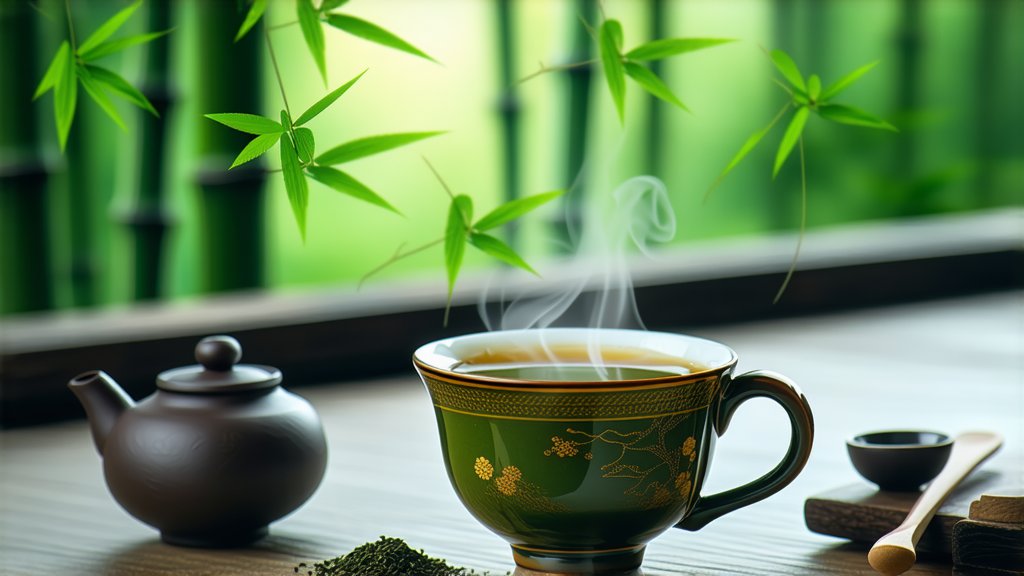
Nestled within the lush hills of Anxi County in Fujian Province, China, lies a gem that has captivated tea enthusiasts for centuries—Tieguanyin, also known as the "Iron Goddess of Mercy." This revered oolong tea stands as a testament to China's rich tea culture, embodying the perfect harmony between man and nature. In this exploration, we delve into the history, varieties, intricate craftsmanship, and art of appreciating this exquisite beverage.
A Historical Journey
The origins of Tieguanyin can be traced back to the Ming Dynasty (1368-1644), with its name believed to honor Kuan Yin, the Goddess of Mercy. Legend has it that the tea was discovered by a poor scholar named Wei Shuo, who found an ancient wild tea tree on a mountainside. He propagated the plant and shared its leaves with others, leading to the creation of what is now celebrated as Tieguanyin. Over time, this tea gained royal patronage during the Qing Dynasty and became a symbol of prestige and refinement.
Varieties Unveiled
Tieguanyin encompasses several sub-varieties, each offering unique aromatic profiles and flavors. Among them, the most renowned are Xiong Di Xiang (Brotherly Fragrance), Lan Hua Xiang (Orchid Fragrance), and Rou Gui Xiang (Cinnamon Fragrance). Xiong Di Xiang is characterized by its floral and fruity notes, reminiscent of orchids and honey. Lan Hua Xiang exudes a delicate yet intense orchid-like aroma, while Rou Gui Xiang boasts a warm cinnamon spice scent intertwined with hints of caramel and chocolate. These distinctions arise from variations in cultivation, processing techniques, and even the specific terroir where the tea plants are grown.
The Art of Craftsmanship
The magic of Tieguanyin lies not only in its heritage but also in the meticulous craftsmanship involved in its production. The journey begins with careful hand-picking of only the tenderest shoots and leaves, usually during the spring and autumn harvests when the climate conditions are ideal. After plucking, the leaves undergo a series of steps that transform them into the coveted oolong tea.
First comes withering under the sun or in shade, allowing the leaves to lose moisture and become pliable. This process is crucial for developing the tea's unique flavor profile. Following withering, the leaves are tossed in large woks to initiate oxidation. This step requires great skill as the tossing must be done continuously and evenly to achieve the desired level of oxidation, which ranges between 20% and 80% depending on the desired style of Tieguanyin.
Next, the leaves undergo fixation through high-temperature heating to halt enzyme activity and lock in their flavors. They are then rolled to shape the leaves and further express juices, enhancing the tea's complexity. After rolling, the leaves are dried gently to remove any remaining moisture without compromising their delicate essence. Finally, they are sorted and graded based on size, shape, and quality before packaging, ensuring that only the finest leaves make it to the consumer's cup.
Savoring the Experience
Appreciating Tieguanyin goes beyond mere consumption; it is an immersive experience that engages all senses. To truly savor its essence, one must employ the traditional Gongfu brewing method. This ritualistic approach emphasizes precision, patience, and respect for the tea.
Begin by warming your teapot and cups with hot water. Place about 5 grams of loose leaves into the pot, enough to fill it one-third full. Pour boiling water over the leaves, allowing them to unfurl gracefully. The first infusion serves as a rinse, priming the leaves for subsequent steepings. Subsequent infusions should be timed carefully, starting from around 15 seconds and gradually increasing to bring out different layers of flavors.
As you pour each infusion into small cups, observe the tea's color—a golden hue with a slight amber glow. Inhale deeply to appreciate the aroma, letting it guide you into anticipation. Sip slowly, allowing the tea to coat your palate, noting its smooth texture and complex interplay of sweetness, bitterness, and umami. Pay attention to how the aftertaste lingers and evolves with each sip, revealing new dimensions of the tea's character.
In conclusion, Tieguanyin is more than just a beverage; it is a gateway to understanding Chinese tea culture and the artistry behind its creation. From its storied past to the nuanced craft of its production and the meditative practice of its enjoyment, every aspect of Tieguanyin invites us to slow down and savor life's simple pleasures. Whether you are a seasoned tea connoisseur or a curious novice, embarking on a journey with Tieguanyin promises an enriching encounter with one of China's greatest contributions to the world of tea.